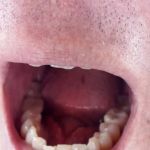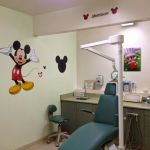What Are the Early Signs of Gum Disease and Tooth Decay? How to Recognize and Treat Them
- 1. Understanding Gum Disease and Tooth Decay
- 2. Early Signs of Gum Disease
- 3. Early Signs of Tooth Decay
- 4. How to Treat Gum Disease and Tooth Decay
- 5. My Personal Experience with Gum Disease and Tooth Decay
- 6. Prevention Tips for Gum Disease and Tooth Decay
1. Understanding Gum Disease and Tooth Decay
Gum disease and tooth decay are two of the most common dental issues that many people face. I first became aware of these problems when I noticed a few symptoms in my own mouth that I couldn’t ignore. Gum disease, or periodontal disease, is an infection of the gum tissues that can lead to tooth loss if not addressed. On the other hand, tooth decay occurs when the enamel of your teeth breaks down due to bacteria and sugars, leading to cavities.
Both of these conditions can start without noticeable symptoms, which is why it’s important to recognize early signs before they worsen. The earlier you detect them, the easier it is to treat and prevent long-term damage. Let’s dive into how you can identify the early warning signs of these dental issues and the steps to take if you notice them in your own mouth.
2. Early Signs of Gum Disease
Gum disease is often a silent condition, meaning it can develop without you realizing it until it’s more advanced. I’ve been there, noticing a slight discomfort in my gums that seemed harmless at first. However, understanding the early signs of gum disease is key to preventing it from progressing. Here are some of the earliest symptoms that I learned to look out for:
2.1. Bleeding Gums
One of the most common early signs of gum disease is bleeding gums, especially when brushing or flossing. I remember the first time I noticed this symptom, I thought it was because I was brushing too hard. But when it happened repeatedly, I realized it was a warning sign of gum inflammation caused by plaque buildup. If your gums bleed easily, it’s time to consult with a dentist to prevent further damage.
2.2. Swollen and Red Gums
Healthy gums should be firm and pink, but swollen or red gums can be an indication of infection. I began noticing that my gums would sometimes appear swollen, especially around the gum line. This is an early sign of gingivitis, the first stage of gum disease, and should not be ignored. The sooner you act, the easier it is to reverse the condition.
2.3. Persistent Bad Breath
Persistent bad breath, or halitosis, is another sign that something may be wrong with your gums. In my case, I noticed that no matter how much I brushed, I still had an unpleasant odor in my mouth. This happens due to the bacteria that accumulate in the gums when they’re infected. If this symptom lasts for more than a few days, it’s time to visit your dentist.
2.4. Receding Gums
As gum disease progresses, the gums can begin to recede or pull away from the teeth. This was one of the more alarming symptoms for me, as I noticed my teeth seemed longer than usual, exposing more of the tooth surface. Gum recession can lead to tooth sensitivity and is often a sign of advanced gum disease. If you experience this, it’s essential to seek treatment immediately to protect your teeth and gums.
3. Early Signs of Tooth Decay
Tooth decay, like gum disease, can often start without any noticeable signs. However, there are early symptoms that can help you identify tooth decay before it progresses into a cavity. I didn’t realize the importance of monitoring these signs until I experienced them myself:
3.1. Tooth Sensitivity
One of the first signs I noticed was tooth sensitivity, especially when eating something cold or hot. It felt like a sharp, uncomfortable sensation that lasted for a few seconds. Sensitivity can indicate enamel loss or the beginning of tooth decay, which should be addressed before it becomes a larger problem.
3.2. Visible Discoloration or Stains
Stains or dark spots on your teeth are often an early sign of tooth decay. These marks can be a result of plaque buildup, which starts to break down the enamel. I remember seeing small brown spots near my gum line, which turned out to be early signs of decay. While they may seem minor, these stains are indicators of larger issues that need attention.
3.3. A Hole or Pit in the Tooth
If you notice a small hole or pit in your tooth, it’s a clear sign that decay is starting. I experienced this once, and although the hole was small, I knew it meant that I needed to see a dentist. Catching tooth decay at this stage means that the damage can often be treated with a simple filling before it worsens.
4. How to Treat Gum Disease and Tooth Decay
Treating gum disease and tooth decay at an early stage can save you from more serious dental procedures later on. Here’s what I did to address both of these conditions:
4.1. Professional Cleanings and Scaling
If you’re dealing with gum disease, a professional cleaning or scaling treatment is often the first step. During this procedure, your dentist will remove plaque and tartar buildup from below the gum line. This can help reverse gingivitis and prevent the progression of gum disease. In my case, a deep cleaning worked wonders and restored my gum health.
4.2. Fillings for Tooth Decay
For early tooth decay, fillings are usually the treatment of choice. After I noticed a small cavity, my dentist filled the tooth, preventing the decay from spreading further. Early intervention is key to preventing the need for root canals or more invasive procedures later.
4.3. Improved Oral Hygiene
At home, improving my oral hygiene routine was essential. Brushing at least twice a day, flossing daily, and using a fluoride mouthwash helped prevent further damage. I’ve also switched to a toothbrush with softer bristles to prevent gum irritation. These changes were important in maintaining my oral health and preventing future issues.
5. My Personal Experience with Gum Disease and Tooth Decay
I’ve had my fair share of dental challenges, and I know how overwhelming it can be to deal with the early signs of gum disease and tooth decay. When I first experienced bleeding gums and tooth sensitivity, I wasn’t sure what to expect. But by acting quickly and following the advice of my dentist, I was able to stop the progression of both issues before they caused more serious damage.
6. Prevention Tips for Gum Disease and Tooth Decay
Preventing gum disease and tooth decay is all about consistency and maintaining a good oral hygiene routine. Here are the key habits I’ve found to be the most effective:
6.1. Brush and Floss Regularly
Brushing twice a day and flossing once a day is essential for keeping plaque and bacteria at bay. I’ve found that using a fluoride toothpaste helps strengthen my enamel and protect against decay.
6.2. Visit Your Dentist Regularly
Regular dental visits are key to catching issues early. I make it a priority to see my dentist every six months for check-ups and cleanings. These visits help keep my teeth and gums in top condition and prevent more serious issues from developing.
6.3. Maintain a Healthy Diet
A balanced diet, rich in vitamins and minerals, is vital for gum and tooth health. I try to limit sugary foods and beverages, as they can contribute to plaque buildup and tooth decay.
By staying aware of the early signs of gum disease and tooth decay, you can take action before these conditions progress. If you’re looking for more tips on dental care or need help addressing symptoms, visit Dentistry Toothtruth for expert advice and personalized care!







 Dental Care at Dr. Phillips4.0 (205 review)
Dental Care at Dr. Phillips4.0 (205 review) Madison Family Dental Associates4.0 (280 review)
Madison Family Dental Associates4.0 (280 review) Higley Park Dental4.0 (563 review)
Higley Park Dental4.0 (563 review) MapleTree Pediatric Dentistry4.0 (102 review)
MapleTree Pediatric Dentistry4.0 (102 review) Smile Central Dental4.0 (506 review)
Smile Central Dental4.0 (506 review) Schnierow Dental Care3.0 (177 review)
Schnierow Dental Care3.0 (177 review) The Importance of Oral Health Education During Pregnancy for a Healthy Pregnancy
The Importance of Oral Health Education During Pregnancy for a Healthy Pregnancy Best Tips for Brushing Your Teeth Properly for Healthy Gums: Essential Techniques for Oral Health
Best Tips for Brushing Your Teeth Properly for Healthy Gums: Essential Techniques for Oral Health Why Skipping Dental Checkups Can Lead to Bigger Oral Health Problems
Why Skipping Dental Checkups Can Lead to Bigger Oral Health Problems Advantages of Porcelain Dental Restorations
Advantages of Porcelain Dental Restorations How Can Diabetes Cause Tooth and Gum Problems? Preventing and Managing Oral Health Issues
How Can Diabetes Cause Tooth and Gum Problems? Preventing and Managing Oral Health Issues Healthy Habits for Promoting Good Oral Health and Hygiene: Tips for a Healthy Smile
Healthy Habits for Promoting Good Oral Health and Hygiene: Tips for a Healthy Smile